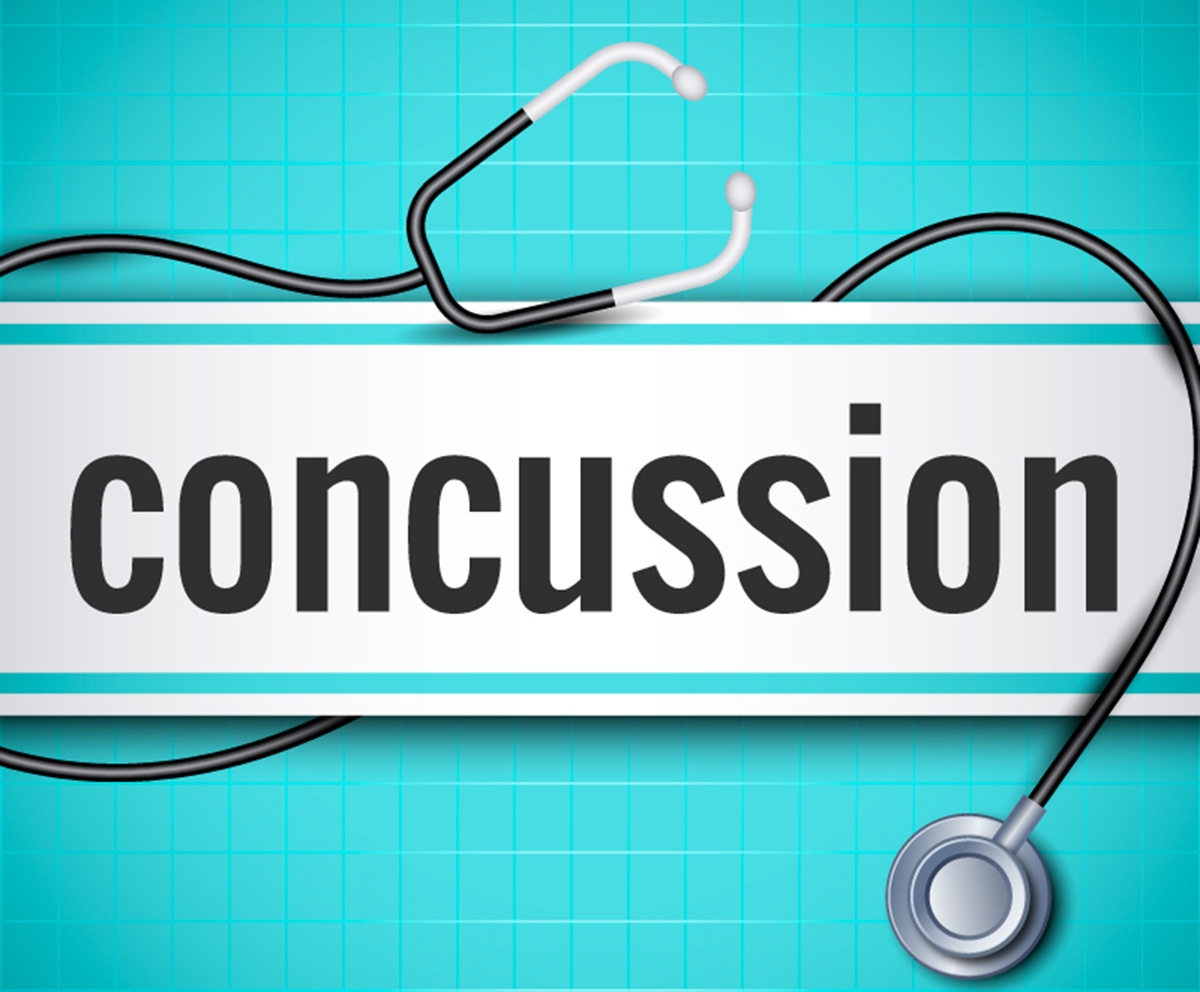The Dangers Of Head Injuries
Think back a second — surely, you were hit on the head with a blunt object, fell head-first, or had a sport-related accident with a loss of consciousness at least once in your lifetime?
Some of us could be "lucky" enough to experience all of the above, and the luckiest of all would continue banging their heads against hard objects throughout life. The good thing is that not all contacts between the head and a hard surface result in a brain injury. The bad thing is that repeated head injuries might lead to significant permanent brain damage. "If not for head injuries, I'd be a genius" works as an excuse now and then.

Mild traumatic brain injury, commonly known as a concussion, can cause long-lasting complications. The leading causes of concussion are falls, motor vehicle crashes, and sporting activities. Depending on where you live, throw in assaults with blunt weapons and firearms.
Concussion Assessment Tools
In recent years, sports-related concussions have become a hot topic. The initial focus was on professional sports, such as American football and hockey, which brought greater awareness of the dangers of concussions in general. The Sport Concussion Assessment Tool, third edition (SCAT3) is the most recent instrument for a concussion evaluation in athletes aged 13 years and older. The ChildSCAT3 is used for children between five and 12 years of age. Booth tools are designed for use by medical professionals.
The major components of the SCAT3 are:
- The Glasgow Coma Scale Score, which ranges between 15 (the best) and three (the worst). Scores of less than five indicate an 80% chance of persistent vegetative state or death, and scores higher than 11 correlate with a 90% recovery chance.
- Symptom evaluation, self-reported and clinician-monitored.
- An assessment of orientation, concentration, immediate memory and delayed recall (“cognitive assessment” in doctorspeak).
- A balance examination.
The Pocket Concussion Recognition Tool (Pocket-CRT) was released at the same time as the SCAT3. The “target audience” for this product is coaches and parents. It consists of only three parts:
- Visible clues of suspected concussion
- Signs and symptoms
- Memory function (A short test related to a sporting event, e.g.: “Who scored last in the game”?)
Apps
There are a number of free apps related to concussion recognition and management. I dare say that I’ve tested most of them or at least tried to make them work. Here are the results of my experimentation.
MACE
The Military Acute Concussion Evaluation tool resembles the SCAT.
The app consists of concussion screening, cognitive and neurological assessment, and symptom screening. The concussion screening part allows users to type a short description of the injury event. The end result of an assessment resembles “trauma bay” triage notes:
Type of events: +Explosion/blast. + Motor vehicle crash
List of symptoms: + Headache. + Nausea. +Visual disturbances
Cognitive exam: orientation 2/5
The results can be emailed as plain text or in a PDF.
There is a “print screen” option which seemingly worked, but I could not locate the screenshots on my phone.
The Verdict: A no-nonsense app.
Concussionmd
The app is designed for both medical professionals and coaches. It is mostly of educational value rather than an assessment tool. The app contains detailed information about concussions and return to play. It also provides a number of online references, including YouTube.
Under the “Management Strategies” section, the most commonly used concussion assessment tools are listed, including the SCAT3, with references to the respective websites. The SCAT3 can be downloaded as a PDF file.
Medical providers and coaches have an option to take a quiz. Passing both tests successfully does not require extensive medical knowledge; common sense suffices.
The Verdict: A good educational resource.
FirstResponder
The app demands access to a variety of files on the phone and would not work until permission was granted. I wonder how snooping around the folders on somebody’s phone helps assess a concussion, but take it or leave it.
The app is designed for parents, coaches and staff on the sidelines. Following the Pocket-CRT format, it allows an evaluation of symptoms and offers a cognitive assessment. The threshold for diagnosing a concussion is quite low. I played with it for a while: any positive signs or a memory problem results in a recommendation to see a doctor. The app offers to find a physician for a mere $6.49 by downloading the “Map Feature” from Google Play. A user might just as well use Google Maps for free to search for the nearest ER.
The verdict: A good app to use for laypersons, if the “Map Feature” doesn't upset them.
PAR CRR
Similarly to the “First Responder” app, it is designed for parents and coaches. The app offers symptom evaluation and a cognitive assessment at a sporting event and at home. Just like the “First Responder” app, it urges just about anyone to seek professional help but, fortunately, has no expensive “Map Features”. The “Home Symptom Monitoring” option allows parents to do serial assessments. The app also provides Post-Concussion Home and School Instructions and a Return-to-Play guide.
The verdict: A good app to use for laypersons. It works without an internet connection, which is an obvious plus point.
READ Warning: Will That Concussion Give You Alzheimer's?
mTBI pocket guide
The app is designed for medical professionals. It contains abundant materials on traumatic brain injury, albeit outdated. The app refers to the ICD9 (The International Classification of Diseases) while the entire progressive world uses the ICD10. The summary of medical recommendations on cognitive rehabilitation makes reference to the Brain Injury Conference of 2009. Mind you, the conference is annual, and it is almost 2017.
The Verdict: The app is comprehensive but a bit outdated. It might be prudent to use the “UpToDate” app instead.
The Least Useful And Failed Concussion Apps
Concussion Quick Check
The app is produced by the American Academy of Neurology and has limited value outside of the US.
The main section ("Quick Check") contains several checklists:
- Common signs of concussion observed by others
- Common symptoms reported by the athlete
- What to do if the athlete sustained a head injury during the game: i.e., basic life support instructions followed by advice to consult a professional
- Remove from play and return to play: i.e., advice to defer these decisions to a neurologist

The next section is dedicated to finding a neurologist. This option requires an internet connection and enabling of the Location Services on the phone. A location can be entered manually via a city, state or zip code. The last section, "State Laws", lists legislation by State.
The Verdict: The app mostly serves as "yellow pages" for finding a neurologist in the States.
Concussion injury
The app redirects to the website “mybraintest.org” to check for symptoms of concussion via an online test. The remainder of the app consists of articles about diagnosis, treatment, prognosis, and two concussion stories delivered by athletes.
The Verdict: A user might just as well google "concussion".
Concussion ED
The app is produced by Parachute, a Canadian charity dedicated to educating Canadians about the prevention of brain and spinal cord injuries. The main sections of the app, "Prevent", "Recognize”, and "Manage", redirect to the respective videos on YouTube. The menu is available in both official languages of Canada, English and French, but the videos on YouTube are in English only.
The Verdict: You might just as well go directly to YouTube.
Concussion Coach
The app is designed as an educational, self-assessment, and self-help post-concussion resource. It offers to do scheduled serial post-concussion symptom evaluations followed by management recommendations such as “practise yoga” or “remember fun vacation”. A number of self-help techniques are also provided, such as “inspiring quotes” and “mindful eating”.
The Verdict: In my cynical opinion, this app is of questionable practical value.
READ Women Have Harder Time Recovering From Concussions Than Men
Failed Apps
S.T.A.C. by The Medical College of Wisconsin advertised that it “effectively and objectively tracks symptoms of a concussion using the SCAT3 symptom checklist”. The app announced that it could not be installed in my device’s country. I wonder why folks in Wisconsin do not like Canada.
CSX HeadGuard: “This app is only available for approved registered attendees of respective CSX events”. A quick search revealed that the CSX company is based in New Zealand and focuses on concussions in professional rugby players. I like “All Blacks” (The New Zealand national rugby union team), but that did not help me get access to the app.
ConcuTrack categorically refused to work on my Samsung Galaxy S5 (Android 6.0.1) but, for some reason, worked somewhat on my ancient Motorola XOOM (Android 4.1.2) tablet. We did not go that far, however, which is understandable, since the app was designed for phones, not tablets.
The app offers “Standardized concussion tests for 6-18-year-olds”. My tablet managed to process (very slooooowly) only the first five questions, which comprised 16% of the entire test.
- Q1: Language preference (English or Spanish)
- Q2: Name
- Q3 and 4: Personal and provider’s emails. “Ask parents, if you don’t know” – the app advised. I see some logic there. If a 6-year-old is able to ask: “Parents, what is the email of my medical provider?” then there is probably nothing wrong with his or her cognitive function.
- Q5: What month is it?
Something tells me that the next questions were going to be about the day of the week, date and year, just like in the ChildSCAT3. The app is not awfully popular, according to the installation statistics (only 50-100 installs). I wonder why.
In conclusion, a few good concussion recognition apps are available for non-medics, but there is an obvious lack of SCAT apps for medical professionals.
Keep your head safe, everyone.
- Sports-Related Concussions in Youth Improving the Science, Changing the Culture, Washington (DC): National Academies Press (US) 2014 Feb 4. ISBN-13: 978-0-309-28800-2ISBN-10: 0-309-28800-2
- http://bjsm.bmj.com/content/47/5/259.full.pdf - detailed instructions about use of the SCAT3
- http://bjsm.bmj.com/content/47/5/267.full.pdf - detailed instructions about use of the Pocket-CRT
- Photo courtesy of freepik.com
- Photo courtesy of neccorp: www.flickr.com/photos/neccorp/14445634744/


Your thoughts on this